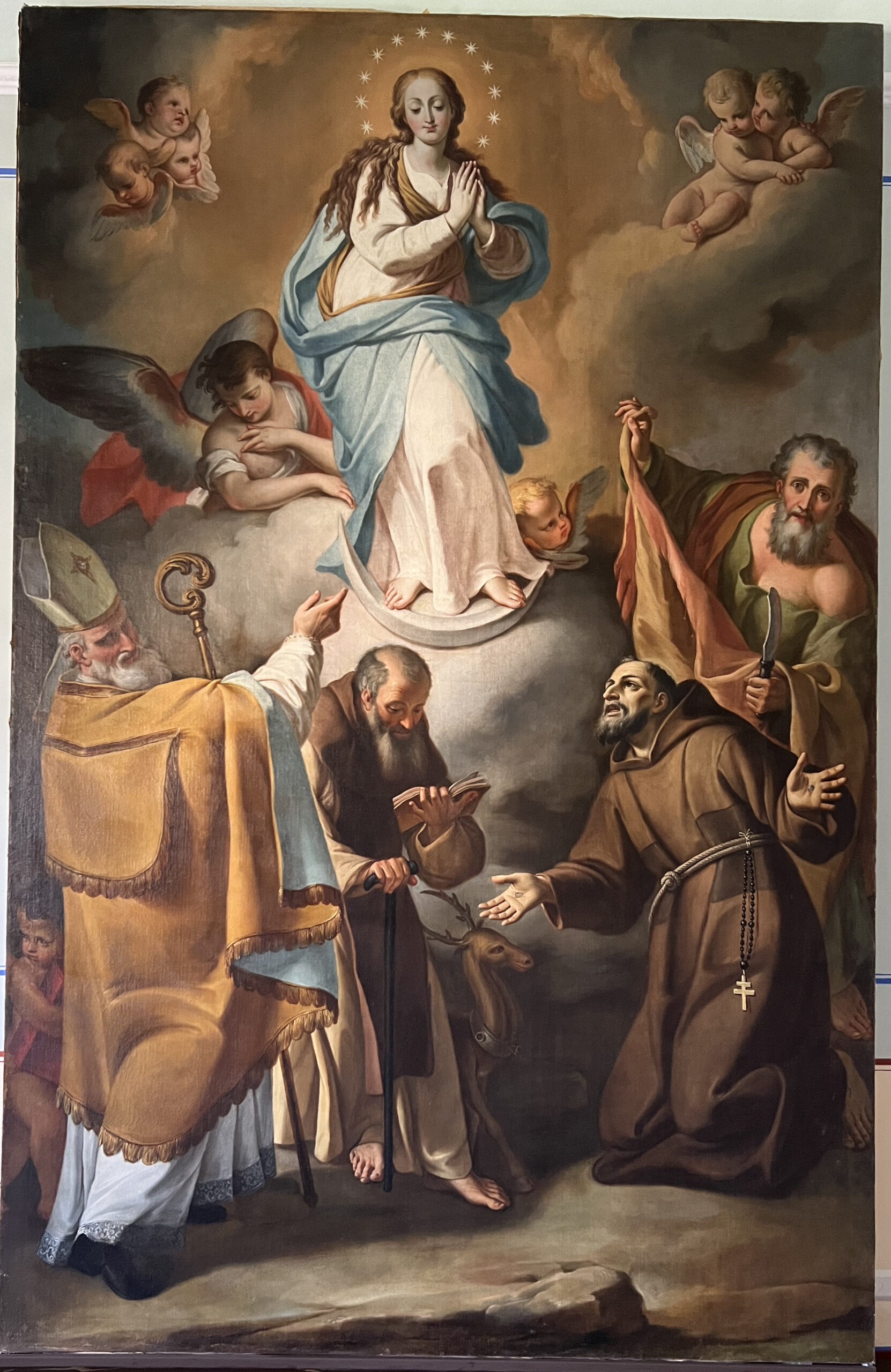The work described in detail in the early 19th century is attributed to Capuchin Father Fedele da S. Biagio with a date of 1794.
Great devotion has always been reserved by the Franciscan family for the Immaculate Conception, here represented according to the classic iconography derived from Revelation: girded with twelve stars and with the moon under her feet.
Four figures of saints find their place in the lower register. Starting from the left: St. Bartholomew, holding with his hands his own skin and a bloody knife, St. Francis of Assisi with his stigmatized hands open “and in a blissful ecstasy of rapt love,” St. Calogero, absorbed in reading with the doe at his side, and finally St. Agathon or – according to can. Rodriguez – St. Bonaventure, minister general of the Franciscan Order and Doctor of the Church, author of the biography of St. Francis and of many writings on Our Lady, whom he points to here with his right hand.
This is how Can. Rodriguez in the early 1800s: “Mary, who seems beautiful and most composed figure, adorned her head with shining glory by six vague little angels. Stassi on the right a group of three figures; […] in on the left of the picture remains the stigmatized Francis, open his hands, and in a blissful ecstasy of rapt love, whose fame is beyond all human imagining while beautiful. The colossal figure follows who holds in on the straight hand bloody skin and torn in pieces, and holds the missing the deadly knife. He is the martyr of the family of Ptolemies. Here everything is great, and the great stands out in the action and dominates it […] The Painter seems unknown, my beloved Leonardo, nor to the painting can be read in it; but by report of old Father Friar Giovanni da Lipari who now closes the circle of eighteen lustres it is known to be that the work of Fedele da S. Biaggio Capuchin priest made in 1794, famous in the pictorial art that was studied for the space of thirty years. “

